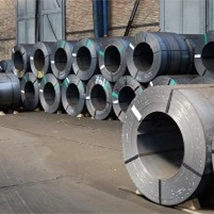 Maintaining inventory is complicated and, in many cases, time-consuming. Knowing what items to procure, in what quantity and when is a moving target. For businesses in the steel and metals industry, procurement decisions fluctuate based on supply and demand, economic conditions, and a number of other variables.
Maintaining inventory is complicated and, in many cases, time-consuming. Knowing what items to procure, in what quantity and when is a moving target. For businesses in the steel and metals industry, procurement decisions fluctuate based on supply and demand, economic conditions, and a number of other variables.
Having an inventory management strategy is necessary to protect profits and maintain satisfied customers. Each business must have their own strategy, but below we discuss three things most inventory management strategies have in common.
An Efficient Inventory Management Strategy Will Save Time and Money
Inventory management becomes complicated as your product lines and supply chains grow in size. Tracking raw materials, manufactured or processed parts, and finished products can get crazy. Even with elaborate spreadsheets or specialized software, it’s difficult to maintain real-time inventory counts or understand trends and exceptions. With so many unknowns, maintaining appropriate levels of inventory and avoiding overstocking or stock-outs—while keeping an eye on profit margins and cash flow—is a challenge to say the least.
Because each company in the steel and metals industry has unique business goals and plans, your specific strategy will be different than others, but here are three things inventory management strategies have in common:
- Business intelligence and optimization tools: Inventory management starts and ends with data. An integrated business management solution will centralize data from across your organization. From inventory and production to sales orders and deliveries, data should be easily entered and accessed in a single, integrated business management system. Today’s technology also includes business intelligence features, such as dashboards and automated reporting, that will provide insight from your data in a format you can use.
- Simplify the process: Complicated supply chains are difficult to manage, especially with manual processes. An integrated solution streamlines data management including both inventory data and vendor information. You can maintain vendor-specific records such as the items you order, the quantity and condition of inventory when it arrives, and whether your vendors or suppliers are delivering on time and within the terms of your contracts or agreements. You may decide that ordering items from multiple vendors is more efficient and affordable. Conversely, there may be times when ordering an assembly makes more sense.
- Manage inventory across multiple locations: Growing businesses may have multiple manufacturing facilities, warehouses, and distribution centers. In some cases, each site will use disparate software systems and methods for managing inventory. A more efficient way to keep track of inventory across multiple locations will be to deploy an integrated management solution that can centralize inventory information for each physical location. A single source of the truth, delivered through a centralized business system, will enable you to shift inventory between locations, using up what you have in stock before purchasing more.
Optimize Inventory Management with Modern Business Technology
There are a number of ways to manage inventory, track suppliers and vendors, and maintain real-time information across multiple facilities. There are also a number of strategies to consider based on the unique needs and goals of your business. Contact The Wolcott Group inventory experts for guidance with choosing and deploying the modern business technology to support your unique inventory management strategy.




